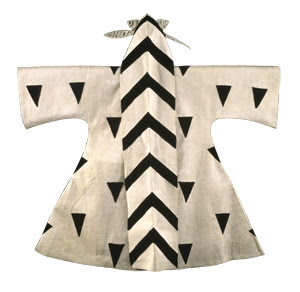Henri Matisse
 Previously known as a bold colorist, the bleached colors of the French Riviera had muted Matisse's palette. In 1920 Matisse designed the costumes for the Russian ballet "The Song of the Nightingale". The audience expected a lavish spectacular, instead they got elegant simplicity and monochromatic color.
Previously known as a bold colorist, the bleached colors of the French Riviera had muted Matisse's palette. In 1920 Matisse designed the costumes for the Russian ballet "The Song of the Nightingale". The audience expected a lavish spectacular, instead they got elegant simplicity and monochromatic color.The overall scheme for his costume designs was restrained. He used black, white and yellow for dramatic emphasis. These costumes were made of paper and created in multiples. When worn en masse, they became part of a fluctuating pattern of shape and color. Matisse simplified the elements of line and decoration, reducing them to their essence.
These costumes related to each other and to their backdrops. Matisse deliberately masked the contours of the dancers' bodies beneath their large, voluminous rectangular costumes, painted in bold, slightly oriental patterns. When they moved, the dancers transformed into stylized patterns of shape and color.

The most dramatic of these costumes were made for a group of mourners who wore hooded coats of felt appliqued with midnight-blue velvet. They appear as abstract forms, yet powerfully symbolize the rituals of death and mourning.
The yellow satin for the costumes for the Mandarin were appliqued with large gold and black discs. When seen from a distance, the dancers looked like a field of yellow sprinkled with flowers.

The white felt robe has applique geometric spots and chevrons representing the m
arkings of the Chinese deer, an animal that represents longevity in Chinese mythology.

Matisse gave the audience of "The Song of the Nightingale" something unexpected and memorable in 1920. His simplicity of design created bold, graphic images.

such a shame colour photography was not available to record the performances
ReplyDelete